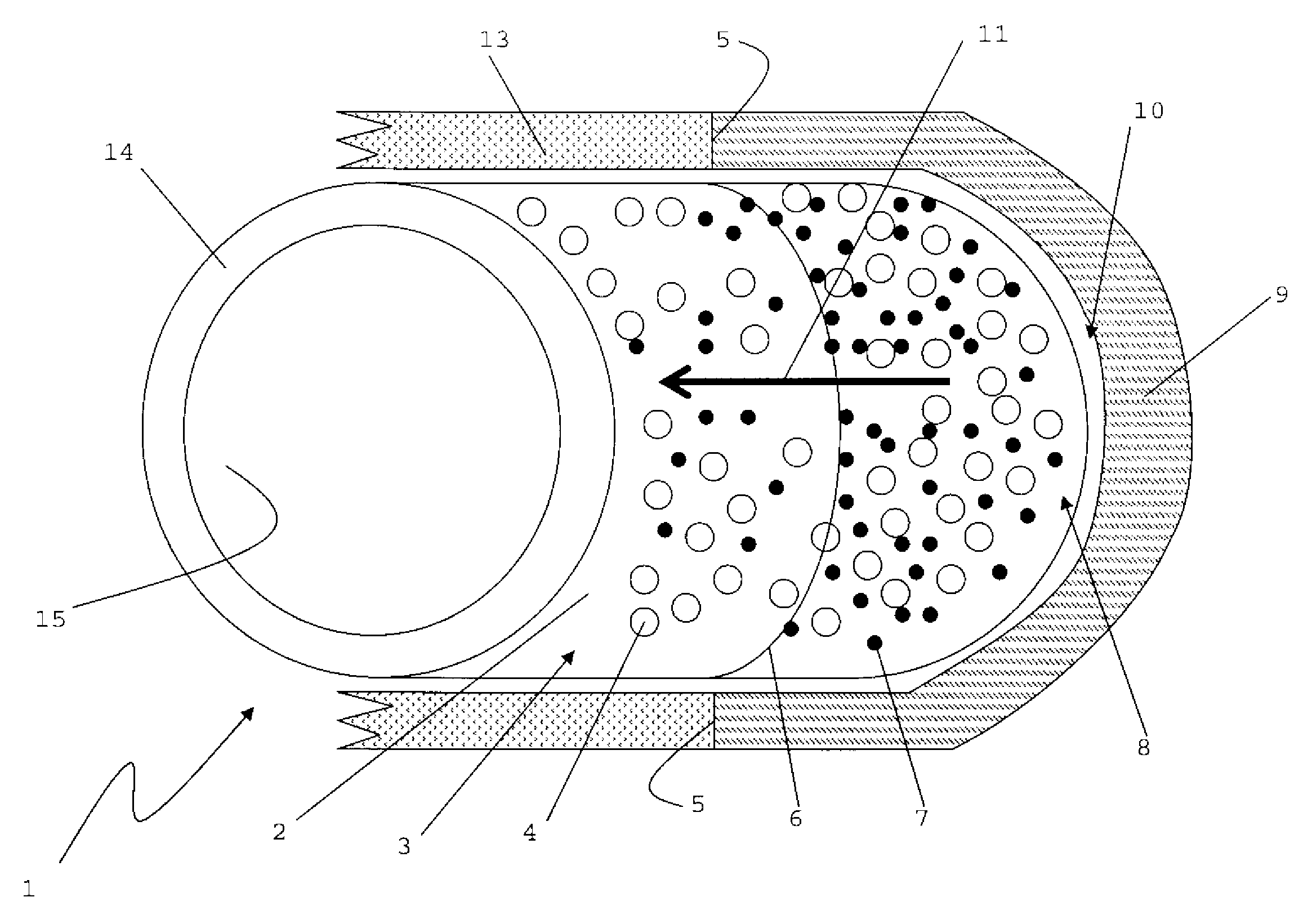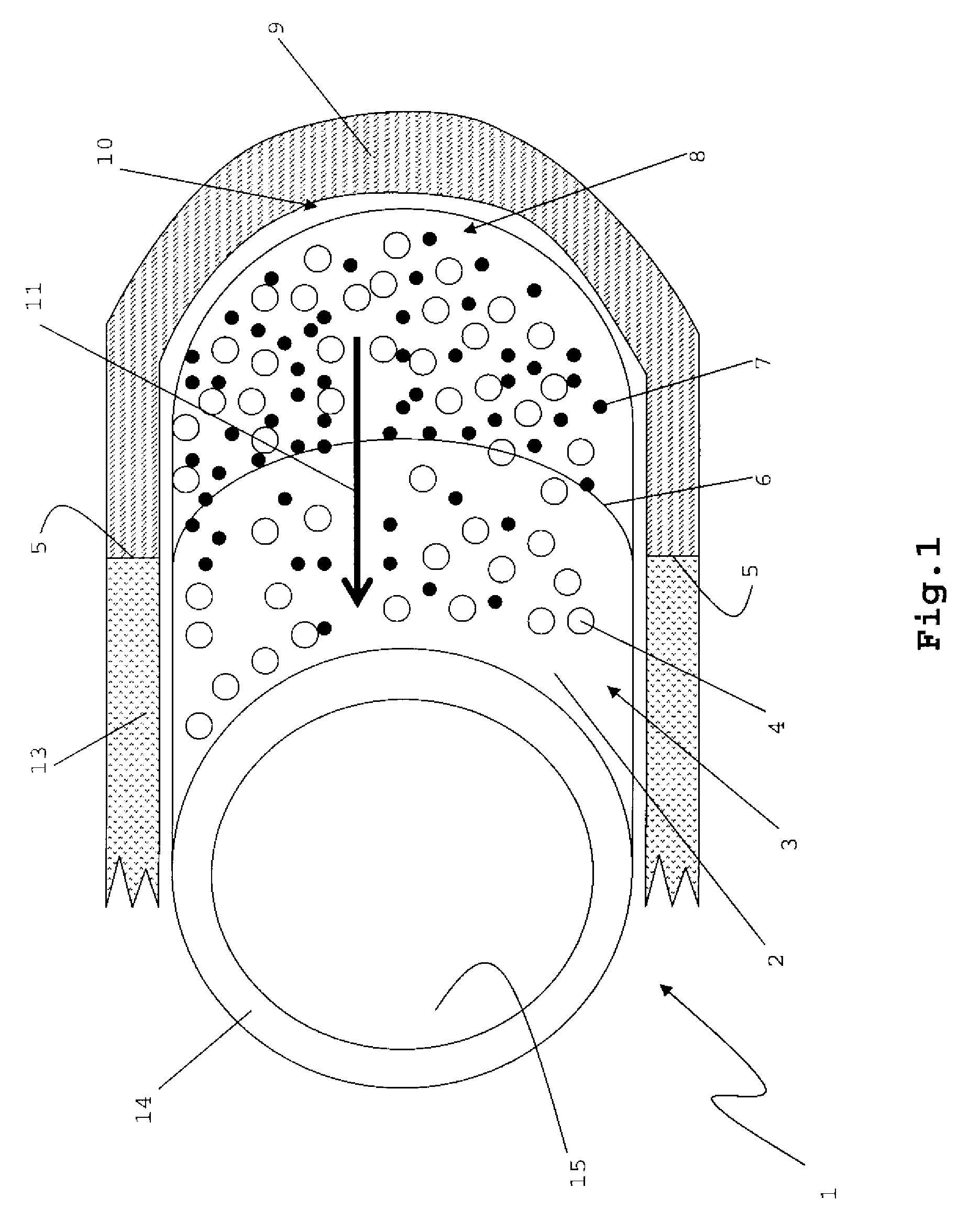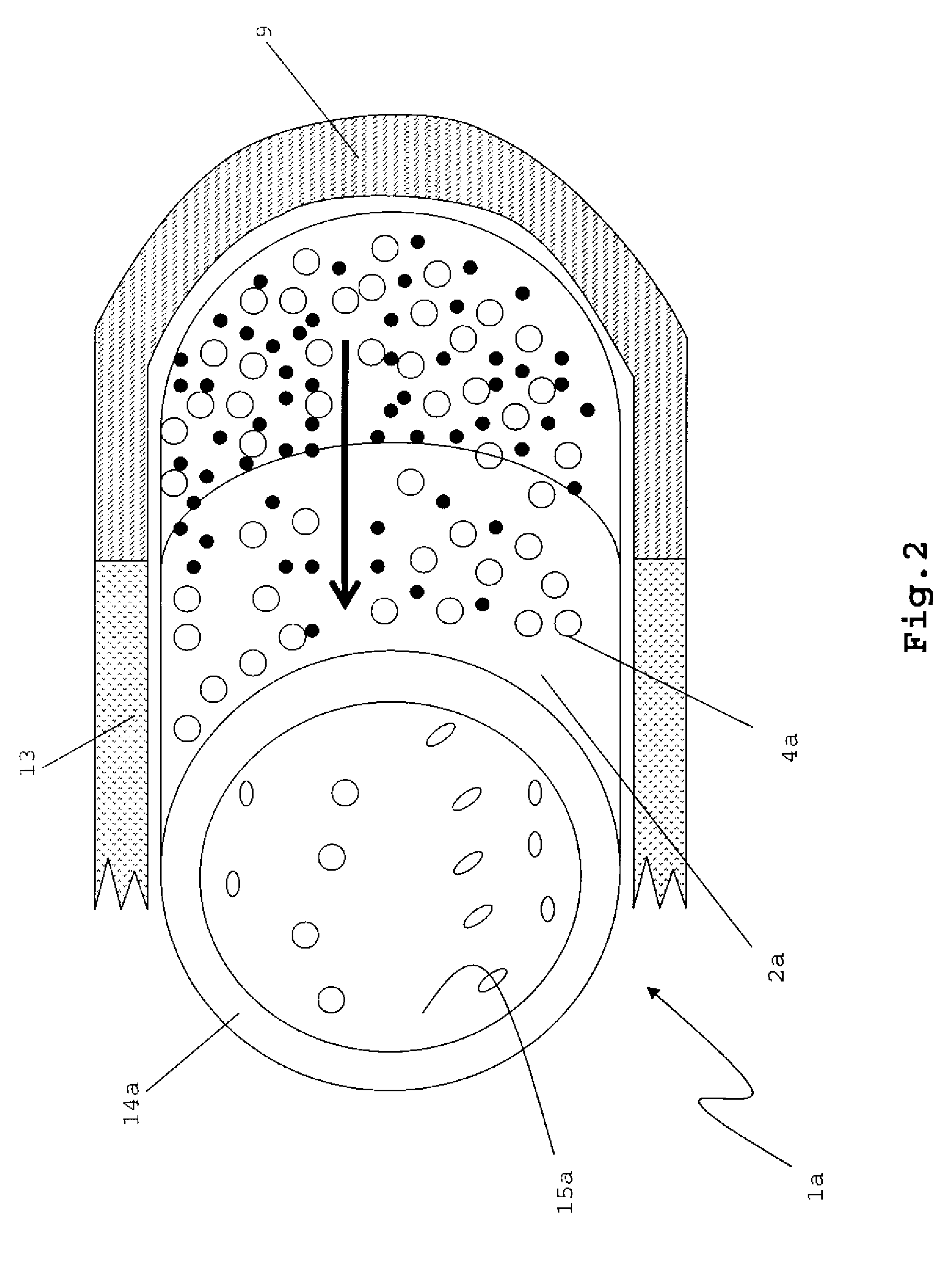Osteochondral implant using a growth factor concentration gradient for repair of bone and cartilage tissue
a growth factor and concentration gradient technology, applied in the field of medical implants, can solve the problems of difficult treatment of damaged cartilage, difficult to remedy osteochondral defects, and difficult to repair, and achieve the effect of promoting the growth of both new bone and cartilage tissu
- Summary
- Abstract
- Description
- Claims
- Application Information
AI Technical Summary
Benefits of technology
Problems solved by technology
Method used
Image
Examples
embodiment
Implant—General Embodiment
[0045]FIG. 1
[0046]FIG. 1 shows a hollow cylindrical implant 1. The implant 1 may have a uniform size, with circular end surfaces that are connected by a single continuous cylindrical surface between the end surfaces. The cylindrical implant 1 may have a ring-like cross-section, with an external diameter from about 1 cm to about 1.5 cm, and an internal diameter that is from 40% to about 80% of the external diameter.
[0047]The implant 1 has an external surface 2 comprising a plurality of pores 4 and a therapeutically effective amount of a growth factor 7. An internal surface 15 of the implant 1 may be substantially non-porous, and may or may not have growth factors 7. The pores 4 may be, for example, from 50 microns to 1000 microns in size, and may or may not be substantially evenly disposed across the external surface 2.
[0048]One of ordinary skill in the art should appreciate that the implant 1 may be molded into various shapes and sizes, for example plug, to...
PUM
 Login to View More
Login to View More Abstract
Description
Claims
Application Information
 Login to View More
Login to View More - R&D
- Intellectual Property
- Life Sciences
- Materials
- Tech Scout
- Unparalleled Data Quality
- Higher Quality Content
- 60% Fewer Hallucinations
Browse by: Latest US Patents, China's latest patents, Technical Efficacy Thesaurus, Application Domain, Technology Topic, Popular Technical Reports.
© 2025 PatSnap. All rights reserved.Legal|Privacy policy|Modern Slavery Act Transparency Statement|Sitemap|About US| Contact US: help@patsnap.com



